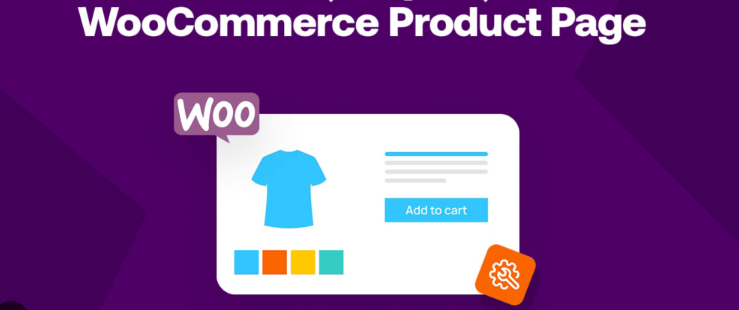WooCommerceAfter going live, order management is the focus. Mastering order history and exporting data can not only improve customer service efficiency, but also optimize inventory, logistics and financial statistics. In this article, we will teach you to manage order history and data export by hand, so that your store operation is easier and more efficient.
![Image [1] - How to manage order history and order export after WooCommerce activation: a practical guide to improve operational efficiency](http://gqxi.cn/wp-content/uploads/2025/06/20250609093344527-image.png)
I. Introduction to the order management interface
WooCommerce comes with a comprehensive order management feature that can be accessed through the backend:
Path: WordPress Backend > WooCommerce > Orders
Here you will see a list of all historical orders with order number, customer name, status, amount, date and other information.
![Image [2] - How to manage order history and order export after WooCommerce activation: a practical guide to improve operational efficiency](http://gqxi.cn/wp-content/uploads/2025/06/20250609145633808-image.png)
II. Common Order Status Explanations
WooCommerce sets multiple statuses for orders in order to track the process:
- Pending: Customers placing an order without paying for it
- Processing: paid, waiting for shipment
- Completed: paid and shipped
- Canceled: The customer or administrator canceled the order.
- Refunded: Partial or full refund is successful.
- Failed: Payment failure or abnormal interruption
These statuses change automatically or manually, helping you track the order lifecycle.
![Image [3] - How to manage order history and order export after WooCommerce activation: a practical guide to improve operational efficiency](http://gqxi.cn/wp-content/uploads/2025/06/20250609145744295-image.png)
III. Order Screening and Search Techniques
On the order management page, you can use the top filter function:
- Filter by time (e.g., last 7 days, last 30 days)
- Filter by status (e.g., view completed orders only)
- Use the search box to search by customer name, email, order number
![Image [4] - How to manage order history and order export after WooCommerce activation: a practical guide to improve operational efficiency](http://gqxi.cn/wp-content/uploads/2025/06/20250609145929802-image.png)
Advanced Operations:
- Click on the order column headings to sort them (e.g., amount, date)
![Image [5] - How to manage order history and order export after WooCommerce activation: a practical guide to improve operational efficiency](http://gqxi.cn/wp-content/uploads/2025/06/20250609190028317-image.png)
![Image [6] - How to manage order history and order export after WooCommerce activation: a practical guide to improve operational efficiency](http://gqxi.cn/wp-content/uploads/2025/06/20250609190047169-image.png)
- Install the "Advanced Order Export" plug-in to enhance filtering capabilities.
Fourth, the order details view and edit
Clicking on an order takes you to the order details page, where you can do the following:
- View customer information (name, address, phone, Email)
![Image [7] - How to manage order history and order export after WooCommerce activation: a practical guide to improve operational efficiency](http://gqxi.cn/wp-content/uploads/2025/06/20250609150921408-image.png)
- Review the content and quantity of goods
![Image [8] - How to manage order history and order export after WooCommerce activation: a practical guide to improve operational efficiency](http://gqxi.cn/wp-content/uploads/2025/06/20250609150939461-image.png)
- Add order notes (optionally visible only to administrators or to notify customers)
- Modify order status (e.g., change "Processing" to "Completed")
![Image [9]-How to manage order history and order export after WooCommerce activation: a practical guide to improve operational efficiency](http://gqxi.cn/wp-content/uploads/2025/06/20250609151227398-image.png)
V. Order export function details
WooCommerce does not natively support batch export of orders, but flexible data export is available through a plugin:
Recommended plugin one:Advanced Order Export For WooCommerce(free of charge)
Functional Features:
- Supports filtering orders by date, status, payment method, etc.
- Export to CSV, Excel, XML, etc.
- Customize export fields (e.g. order number, product SKU, customer email, etc.)
Usage:
- Install and enable the plugin
- Go to Back Office > WooCommerce > Export Orders
- Selecting Filter Criteria and Export Fields
- Click the "Export" button to download the file.
![Image [10]- How to manage order history and order export after WooCommerce activation: a practical guide to improve operational efficiency](http://gqxi.cn/wp-content/uploads/2025/06/20250609151949197-image.png)
Recommended plugin two:WooCommerce Customer / Order / Coupon Export(official paid plugin)
![Image [11] - How to manage order history and order export after WooCommerce activation: a practical guide to improve operational efficiency](http://gqxi.cn/wp-content/uploads/2025/06/20250609152157340-image.png)
Functional Features:
- Automatically export and send to email or FTP at regular intervals
- Synchronize customer, order, and coupon data
- Suitable for medium to large sites for financial or inventory interfacing
VI. How to back up order data (to prevent loss)
In addition to exporting, it is recommended that you perform regular backups of your entire site, including database and media files. Recommended tool:
- UpdraftPlus: Supports automatic cloud backup
- All-in-One WP Migration: One-click export of entire site data
Backup frequency recommendations:
- Number of daily active orders > 50: daily automatic backups
- Smaller stores: weekly or before each update
VII. Recommendations for improving order processing efficiency
- Use the Order Labeling plugin to internally label orders as "high priority" or "invoice required".
- Modify order status (e.g., batch mark as completed) using batch operations
- Enable order email notification (two-way alerts between merchants and customers)
- Cooperate with ERP, CRM system docking, improve the efficiency of data synchronization
VIII. Common uses of exported data
- Financial Reconciliation: export orders for accounting to reconcile revenue, refunds, and other details
- Customer Operations: Extract customer mailboxes for sending coupons, marketing emails
- Inventory management: analyze the sales of each product and optimize the replenishment plan
- Data Migration/Docking ERP: Export order data to ERP system for unified management.
summarize
Order management and export is not an "advanced" feature of WooCommerce, but an indispensable basic ability for e-commerce operation. Through the flexible use of filtering, viewing, editing and exporting functions, you will have a complete set of order control system to support the continuous expansion of your business.
Link to this article:http://gqxi.cn/en/58501The article is copyrighted and must be reproduced with attribution.

























![Emoji[jingya]-Photonflux.com | Professional WordPress repair service, worldwide, rapid response](http://gqxi.cn/wp-content/themes/zibll/img/smilies/jingya.gif)






No comments